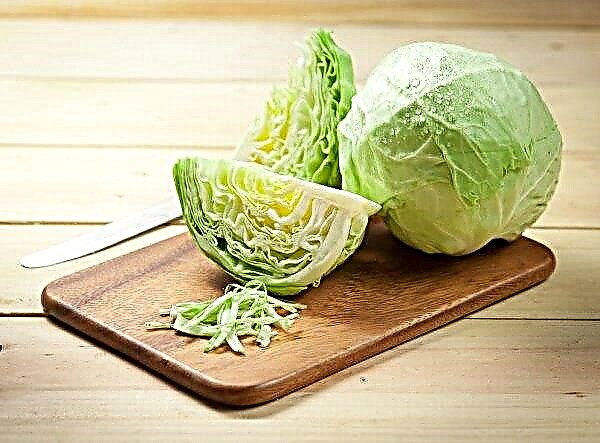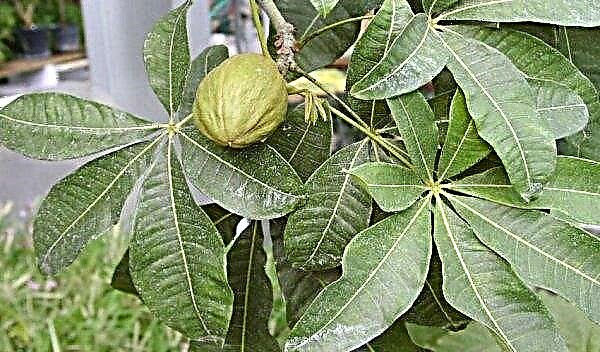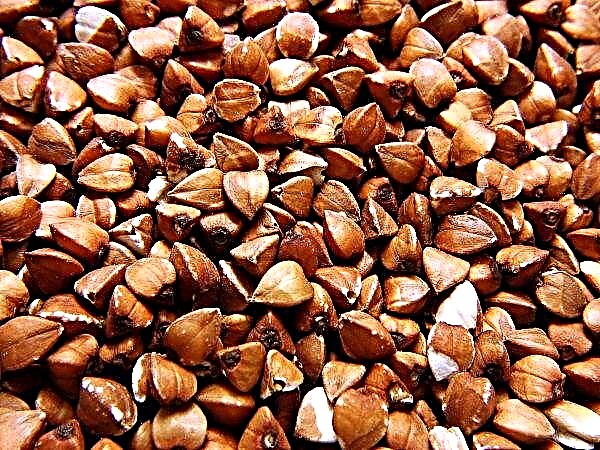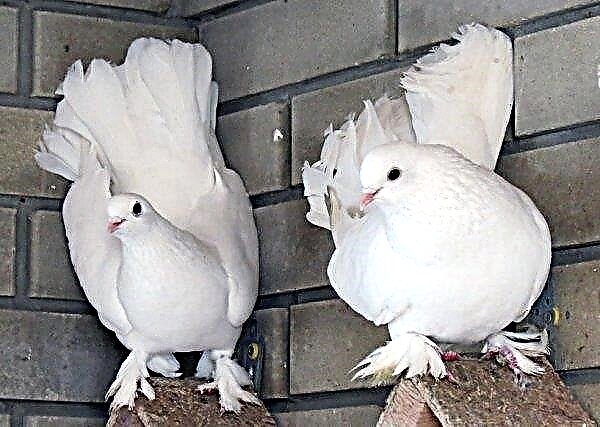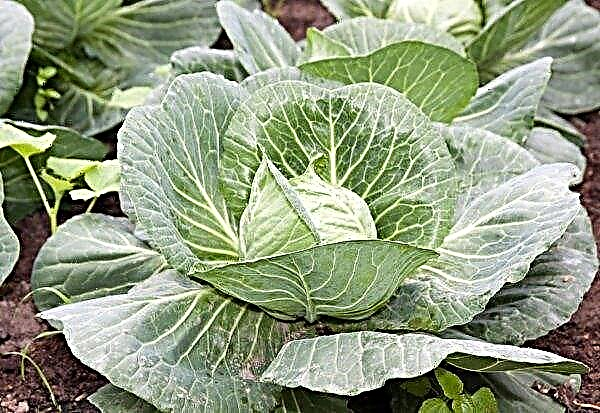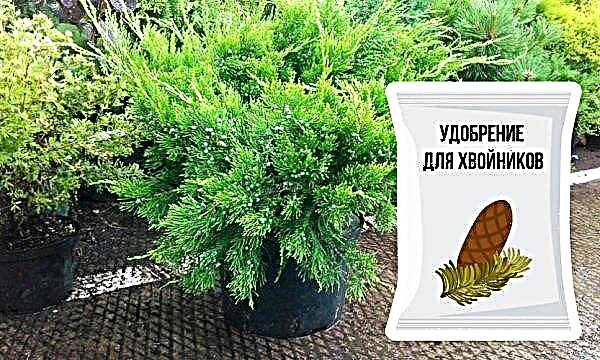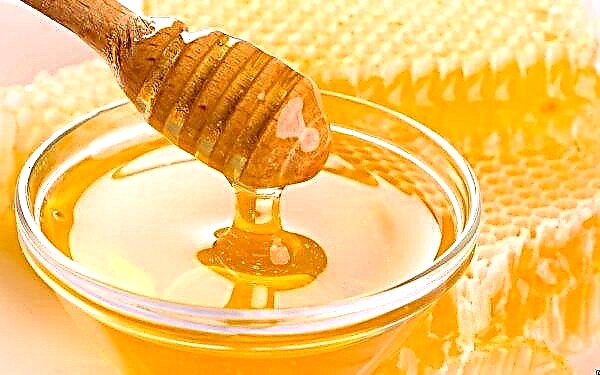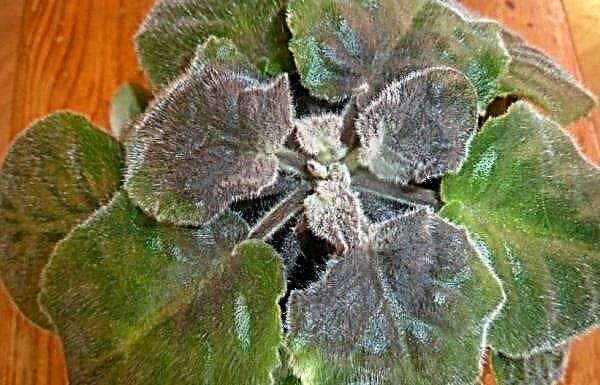The nibbler is considered an indispensable tool in large and small farms: such a device not only facilitates the labor costs of poultry production, but also makes it possible to save a lot of time. Today it is possible to purchase such equipment without any problems, but it is more profitable to make it yourself from improvised means. This article will discuss the basic principles of operation of a peroschipalny machine, as well as detailed instructions for its manufacture.
How to choose a good peroschipalny machine?
Peroschipalnaya machine is a mechanical or electromechanical device for cleaning the carcasses of geese, chickens and other poultry from core and down feathers, as well as their appendages. This device is widely used in livestock farms of any level and size, regardless of production volumes.
The described construction consists of only three main elements:
- platform;
- moving power unit (electric motor or mechanical drive);
- pinch chamber.
Did you know? For the creation of an electric motor, mankind is grateful to Michael Faraday. It was this English scientist in 1821 who invented the principle of converting electrical energy into mechanical energy, which later formed the basis for the creation of all modern engines with electric traction.
There are two varieties of the unit under consideration - the so-called peroschipalnye and perosemnye device. Removable units can be disk or drum type. Drum is a monolithic or collapsible design with a closed volumetric working chamber.
Disk have a small hemispherical working surface, often open in the upper part. Drum machines are most often used in large farms - they allow you to instantly clean several carcasses at once in a continuous production mode. Disk drives are best suited for small farms with a stock of no more than 50 individuals.

Such machines have several advantages - they allow you to instantly clean the carcass of the pen, which is especially important in the case of conveyor production of feather and meat. In addition, such devices require minimal maintenance costs, since often farmers make them on their own. They also have their drawbacks - the main impact on the bird in the pick-up machine is due to the beat fingers. They seriously injure the goose carcass, which reduces its quality and market value.
Pinch devices are arranged on a different principle. They have a working chamber in which only the feather is mechanically exposed: the meat and skin remain intact. This makes it possible to gently remove feather and fluff, while maintaining excellent carcass quality. In addition to the above advantages, such units are more versatile. They allow you to adjust the capacity depending on the volume of production and household needs. However, such machines are often quite expensive and require expensive after-sales service.
Important! If you plan to raise a bird only for the preparation of fluff, you should pay attention to the feathering devices. With appropriate settings, they even allow plucking live geese, which several times reduces the total cost of breeding livestock.
The principle of operation of the device
Regardless of the design, the principle of operation of carcass cleaners is based on general principles. To eliminate the pen, the device selects the optimal power, after which the unit starts up. Then raw materials are loaded into the working chamber, which is divided into feathers and carcass. In drum and disk machines, the main effect on the bird occurs with the help of the so-called working (beating) fingers. They represent a variety of cylindrical inclusions of dense rubber, mounted on the surface of a drum or disk.

The electric motor drives the working chamber with the fingers into rotation, during this the effect on the pen and the skin occurs. With the help of centrifugal force, light fluff and feather settle on the walls of the chamber. After cleaning, the carcass is removed, and the feather is removed from the working chamber through the outlet in the bottom or manually.
Nippers work on the principle of a depilator. Special disks are installed in the working chamber, which, when interacting with the pen, grab it and pull it out. In this case, each carcass needs individual attention: the operator during the process must hold the goose in his hands and carefully bring the pen to the working surfaces, controlling the area of interaction with the skin surface.
Making a machine for plucking geese at home
Since most of the factory models of units for poultry farming have a rather high cost, many farmers make them independently, from improvised means. This not only reduces the costs of the farmer, but also allows you to create a tweezer according to your own project, according to individual requirements. It should be remembered that for a farm of less than 30 heads any equipment is often an unnecessary and excessively expensive measure.

Necessary materials
To prepare the device you will need:
- a table from a profile pipe 50 × 50 × 50 cm;
- sheet of metal with a thickness of 3 mm and a size of 50 × 50 cm
- automobile pump and pulley (from VAZ 2101);
- an electric motor with a starting mechanism with a power of 600–1000 W;
- snare drum - you can use an enameled pan of 20–40 liters or an old tank from the washing machine;
- packing of finger fingers (20-50 pcs.);
- packing of bolts with nuts 10 × 50 mm;
- belt drive system.
Important! If the unit is manufactured for a small home farm, to reduce costs, the electric motor can be replaced with a medium power drill. However, it is necessary to make an adapter between the drill and the working mechanisms.
Manufacturing process
The main stages of the manufacture of the device:
- Fix the metal plate on the table by welding or bolting.
- In the center of the plate, make a hole 5-10 mm in diameter wider than the dimensions of the pulley.
- Connect the pulley and the automobile pump with bolts, and then fasten them with the moving side up to the table with the bolts.
- Cut the bottom of the drum, on the resulting disk, fasten the fingers with a distance of 5-10 cm between them.
- Make a hole 10 × 15 cm on the underside of the drum, and then place the beating fingers in increments of 5–10 cm on its walls.
- Fix the drum over the pulley with the pump exactly in the center, while the side hole must be in the bottom.
- Use the bolts to attach the drive pin to the pulley.
- Install the engine and start button in the inside of the table.
- Connect the belt system to the pump - the construction is now ready.
Did you know? The principle of converting electrical energy into mechanical energy is inherent in many bacteria. Thanks to a chain of several protein molecules, they are able to transform the energy arising from the movement of protons into the rotation of the flagellum used to move it.
Possible manufacturing difficulties
Often, observing the described recommendations and general safety rules, the assembly of the tweezer does not cause special difficulties. However, sometimes the main questions during the construction of the machine arise at the design stages, when it is not possible to find all the necessary materials. Most often they can be solved with a horizontal loading washing machine (such as “Aurika” - it can fully provide the majority of the necessary materials and technical units).

It is also worth mentioning that the manufacture of a tweezer without modern power tools is almost impossible. To create it, you will definitely need a powerful electric drill, as well as an angle grinder (grinder), and this often requires additional investments.
The main mistakes that farmers make when assembling a makeshift nibbler:
- the absence of heavy fingers in the side walls - this significantly reduces the efficiency of the device;
- the bolts are not fully tightened, which leads to excessive vibration of the installation;
- excessively small belt tension between the engine and the pump - causes it to slip during operation;
- low weight of the table - this threatens to shift or even jumps of the structure during engine start-up. In this case, the table needs to be heavier.
A nibbler is a necessary device not only for large, but also for small farms. Despite the fact that the market has a huge number of various factory models of such machines, for small poultry farms they are an unjustified waste. However, the unit can be prepared independently - for this you will need a standard set of power tools and spare parts from an old washing machine.

